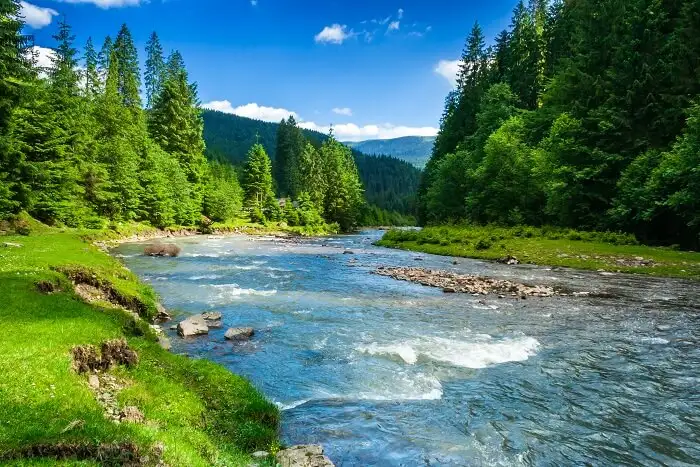There’s something undeniably captivating about casting a line into a gently flowing stream and waiting for that thrilling tug. Streams provide excellent opportunities for fishing enthusiasts to immerse themselves in nature and try their luck at catching a variety of fish species. However, not all sections of a stream are equally productive for fishing. In this blog post, we will explore some key factors to consider when searching for the ideal fishing spot in a stream.
- Water Flow and Structure:
One of the first aspects to assess when looking for a fishing spot in a stream is the water flow and structure. Fish tend to congregate in areas where there is a change in water current, such as behind rocks, fallen trees, or bends in the stream. These structures create eddies and pockets where fish can seek refuge and feed on smaller prey. Look for calm areas downstream from obstructions, as these are likely to harbor fish waiting for food to drift by.
- Depth and Temperature:
The depth and temperature of the water play a crucial role in determining fish behavior and their willingness to bite. Deeper pools or sections with varying depths offer fish the comfort they seek. Additionally, cooler water temperatures are often preferred by many fish species. During warmer months, fish may seek out deeper sections of the stream or areas shaded by overhanging trees or vegetation. Understanding the seasonal variations in water depth and temperature will help you pinpoint the best spots to fish.
- Underwater Cover and Vegetation:
Streams are typically adorned with abundant underwater cover and vegetation, such as rocks, fallen trees, submerged logs, and aquatic plants. These elements provide shelter, shade, and food sources for fish. Pay attention to areas where these features are present, as they are likely to attract fish. Casting your line near or around submerged cover and vegetation increases your chances of finding a hungry fish.
- Insect Activity and Food Sources:
Streams are teeming with aquatic insects, which form a significant part of a fish’s diet. Observing the insect activity around the stream can give you valuable insights into where the fish might be congregating. Look for signs of insects hatching, such as mayflies, caddisflies, or stoneflies. These areas are likely to attract fish as they actively feed on the emerging insects. Matching your bait or lure to mimic the local insect species will greatly improve your chances of success.
- Safety and Accessibility:
When choosing a fishing spot in a stream, it is essential to consider safety and accessibility. Ensure that the location you select is easily reachable and does not pose any risks or hazards. Avoid steep banks, swift currents, or slippery rocks that could lead to accidents. Familiarize yourself with the area, including any regulations or permits required for fishing in the stream, to ensure a hassle-free and legal experience.
Exploring a stream for the perfect fishing spot can be a thrilling adventure for any angler. By considering factors such as water flow, structure, depth, temperature, cover, and food sources, you can significantly increase your chances of landing a prized catch. Patience, observation, and experimentation are key to finding that sweet spot where fish are plentiful and waiting to bite. Remember to respect the environment, follow local fishing regulations, and practice catch-and-release whenever possible to preserve the stream’s natural beauty and its inhabitants for future generations. Tight lines and happy fishing!

Comments are closed